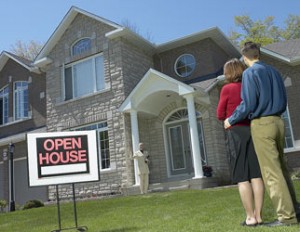How much house do you need?
"Bigger is better" seems to be the mantra of many prospective home-buyers. Will they feel the same way once interest rates begin to rise?
Advertisement
"Bigger is better" seems to be the mantra of many prospective home-buyers. Will they feel the same way once interest rates begin to rise?

The whole idea of how much house we need to live comfortably has gone nuts. Years ago, when I was selling my house in the city to move to the country, I was amazed at who came to look. A downtown house that held two adults and four children, a nanny and an at-home business (approximately 2,500 sq ft) was being scanned by singles, newly marrieds and a couple of women with a baby. I kept thinking to myself, “why do they need all this house?” I would subsequently learn that that house was on the “small” side for the McMansion crowd.
Expectations might be changing. Led by crisis in our south-of-the-border cousins, we may be thinking 3,500, 4,000 and 5,000 sq. ft. homes are a little much. According to a survey by real estate search firm Trulia, 37% of Americans pegged their perfect size at less than 2000 sq. ft.
People are finally waking up to the reality that a home is a place to live, not a sign of your success. If you want your home to be a safe place, not one filled with worry and scrambling to make ends meet, you’ll accept some truths.
Truth #1: Rising interest rates hurt more with a bigger, more expensive house. I know interest rates look like they’re going nowhere, but this won’t last forever. Make sure you’re not one of the McIdiots trying to manage a whopper mortgage when interest rates start going up. If you’re in an oversized mortgage now, this is the perfect time to get that sucker paid down so you don’t end up squeezed when mortgage rates start moving higher.
Truth #2: If your bank tries to lend you money on the side virtually eliminating any equity you have come up with by saving a downpayment, don’t bite. Some lenders are trying to compensate for the elimination of the no-downpayment home. They’re letting people who have done no planning for things like closing costs into an arena many aren’t prepared for. You’ll get eaten by the lions! If you can’t afford to save a downpayment and all the costs associated buying, moving, furnishing and the like, you likely can’t afford to be a homeowner.
Truth #3: Longer amortizations cost way more money. Choosing a 35-year amortization on a mortgage is the only way some people can afford the huge homes they want to buy. The fact that you’ll end up paying almost three times the cost of the home after all’s said and done seems of little concern. With the shift to getting out of debt, which is firmly taking hold (please, please, please), a 35 year mortgage is far less attractive to smart home buyers.
Truth #4: A home is a place to live, not a retirement savings account. The era of double-digit annual gains in home prices is gone. Tying up all your money in mortgage payments when you should be investing for retirement isn’t smart since it means you’ve got all your eggs in one nest. Buying smaller means more money for RRSPs, TFSA and unregistered investment portfolios.
Truth #5: Smaller homes have lower carrying costs. It’s not just the mortgage. It’s the property taxes and insurance. It’s the utility bills and maintenance. And it’s all the stuff it takes to furnish a bigger home. Spending less to keep your home all gussied up means more money for a life now, and a future.
Even as the prices of bigger homes come down to attract buyers, beware of falling into the trap of buying more house than you actually need. Yes, housing demand will go through the cycle and come out on a high again, but it could be a long wait. And if you have to sell your home in the meantime, you might find there are far fewer offers coming in because people are focused on less home being more money to spend elsewhere. Modest homes may be where the next big growth comes in the real estate market.
Share this article Share on Facebook Share on Twitter Share on Linkedin Share on Reddit Share on Email